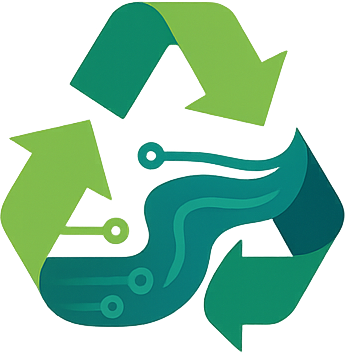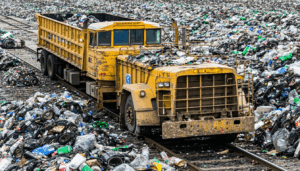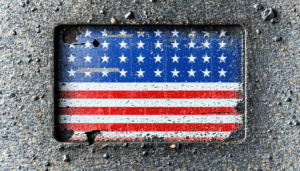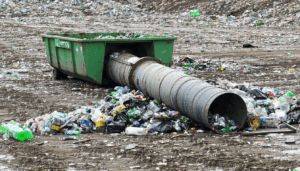Introduction
In the United States, the safe disposal of medical sharps—such as needles, syringes, and lancets—remains a critical public health concern. With millions of Americans relying on these tools for managing chronic conditions like diabetes, improper disposal poses risks of injury and disease transmission. Recent developments in waste management sharps disposal are addressing these challenges through innovative technologies, stricter regulations, and increased public awareness. This article explores the latest updates, their impact on healthcare providers and communities, and what lies ahead for this essential aspect of medical waste handling.
The Growing Need for Safe Sharps Disposal
The volume of sharps waste in the U.S. is staggering. According to the Environmental Protection Agency (EPA), over 3 billion needles and other sharps are used annually in homes alone. Without proper disposal systems, these items often end up in household trash or public spaces, creating hazards for sanitation workers and the general public. The rise in self-administered treatments has amplified the urgency for accessible and secure disposal options.
Local governments and healthcare organizations are stepping up efforts to tackle this issue. Many states have introduced mail-back programs, drop-off sites at pharmacies, and community collection events to ensure safe disposal. These initiatives aim to reduce accidental needle sticks, which the Centers for Disease Control and Prevention (CDC) estimate affect thousands of individuals each year.
New Regulations Shaping Waste Management Sharps Disposal
In 2023, several states have tightened regulations to enhance sharps disposal practices. For instance, California now mandates that pharmacies provide free sharps containers to customers upon request, a move designed to curb improper disposal. Similarly, New York has expanded its Safe Sharps Collection Program, adding over 200 new drop-off locations since January 2023.
These regulatory changes are significant for healthcare providers and patients alike. According to Dr. Emily Carter, a public health expert at Johns Hopkins University, “Stricter laws ensure accountability across the board, from manufacturers to end-users. They also encourage innovation in designing safer disposal solutions.” Compliance with these rules not only protects communities but also reduces legal liabilities for businesses.
Technological Innovations in Sharps Disposal
Technology is playing a pivotal role in transforming waste management sharps disposal. Companies are developing smart containers that automatically seal after use, preventing reuse or accidental exposure. Additionally, mobile apps now help users locate nearby disposal sites, making the process more convenient.
One notable advancement is the introduction of on-site destruction devices in hospitals. These machines render sharps unusable by grinding or melting them, significantly reducing the volume of waste transported to treatment facilities. Industry data suggests that such devices can cut disposal costs by up to 30%, a major incentive for healthcare institutions facing tight budgets.
Impact on Stakeholders
The implications of these developments extend to various groups. For patients, especially those in rural areas, access to safe disposal options means reduced risks and greater peace of mind. Healthcare workers benefit from safer working environments as the likelihood of needle-stick injuries diminishes.
However, challenges remain for small clinics and independent practitioners who may struggle with the costs of compliance. Balancing affordability with safety is a key concern. As noted by Mark Thompson, CEO of a leading medical waste management firm, “While innovations are promising, we must ensure they are scalable and accessible to all providers, regardless of size.”
Future Outlook for Sharps Disposal in the U.S.
Looking ahead, experts predict that federal guidelines on sharps disposal will become more uniform to address inconsistencies across states. Public education campaigns are also expected to intensify, focusing on teaching individuals how to handle sharps safely at home. The integration of artificial intelligence in tracking and managing medical waste could further streamline processes.
The potential for controversy exists, particularly around funding allocations for these programs. Some argue that taxpayers should not bear the burden, while others believe government intervention is essential for public safety. Striking a balance between cost and responsibility will be crucial in shaping future policies.
Conclusion
Waste management sharps disposal in the United States is undergoing a transformative phase with new regulations, technological advancements, and community-focused initiatives. These efforts are vital for protecting public health, reducing environmental hazards, and supporting healthcare systems. As innovations continue to emerge, collaboration among policymakers, industry leaders, and citizens will be key to ensuring a safer future. The path forward requires sustained commitment to accessibility, affordability, and awareness.
Frequently Asked Questions (FAQs)
- What are sharps, and why is their disposal important?
Sharps include needles, syringes, and other piercing medical tools. Proper disposal prevents injuries, infections like HIV or hepatitis, and environmental contamination. - Where can I dispose of sharps safely in the U.S.?
Options include designated drop-off sites at pharmacies, hospitals, or community centers, as well as mail-back programs offered by local health departments. - Are there penalties for improper sharps disposal?
Yes, many states impose fines for disposing of sharps in regular trash or recycling bins due to the health risks involved. - How can I stay updated on local sharps disposal regulations?
Check your state’s health department website or consult with local pharmacies for the latest rules and resources.





